In the world of interior design, where each element of a room tells its own story, industrial-style rugs have emerged as a bold yet versatile statement piece. Whether you’re a novice just dipping your toes into the vast ocean of home decoration or a seasoned pro with a keen eye for aesthetics, these rugs offer a unique blend of raw charm and sophisticated flair. They serve as a perfect bridge between the rugged beauty of industrial elements and the warmth of a welcoming home, making them an essential consideration for any design enthusiast looking to add character to their space.
For those new to the concept, industrial-style rugs are not just about function; they are about making a statement with texture, color, and pattern. These rugs capture the essence of industrial design—think exposed brick, metal accents, and reclaimed wood—while adding an unexpected layer of comfort and style. In this article, we will delve into the intricate details of how these rugs can transform your living space, blending seamlessly with different decor styles while adding a touch of urban elegance.
You’ll learn how to select the perfect industrial-style rug that complements your existing decor, from choosing the right materials to understanding the impact of patterns and colors on the overall ambiance. We’ll also explore practical tips on placement and maintenance to ensure your rug remains a cherished focal point for years to come. By the end of this read, you’ll feel empowered to experiment with industrial-style rugs, confident in your ability to create a space that is both stylish and uniquely yours.
Understanding Industrial Rug Aesthetics
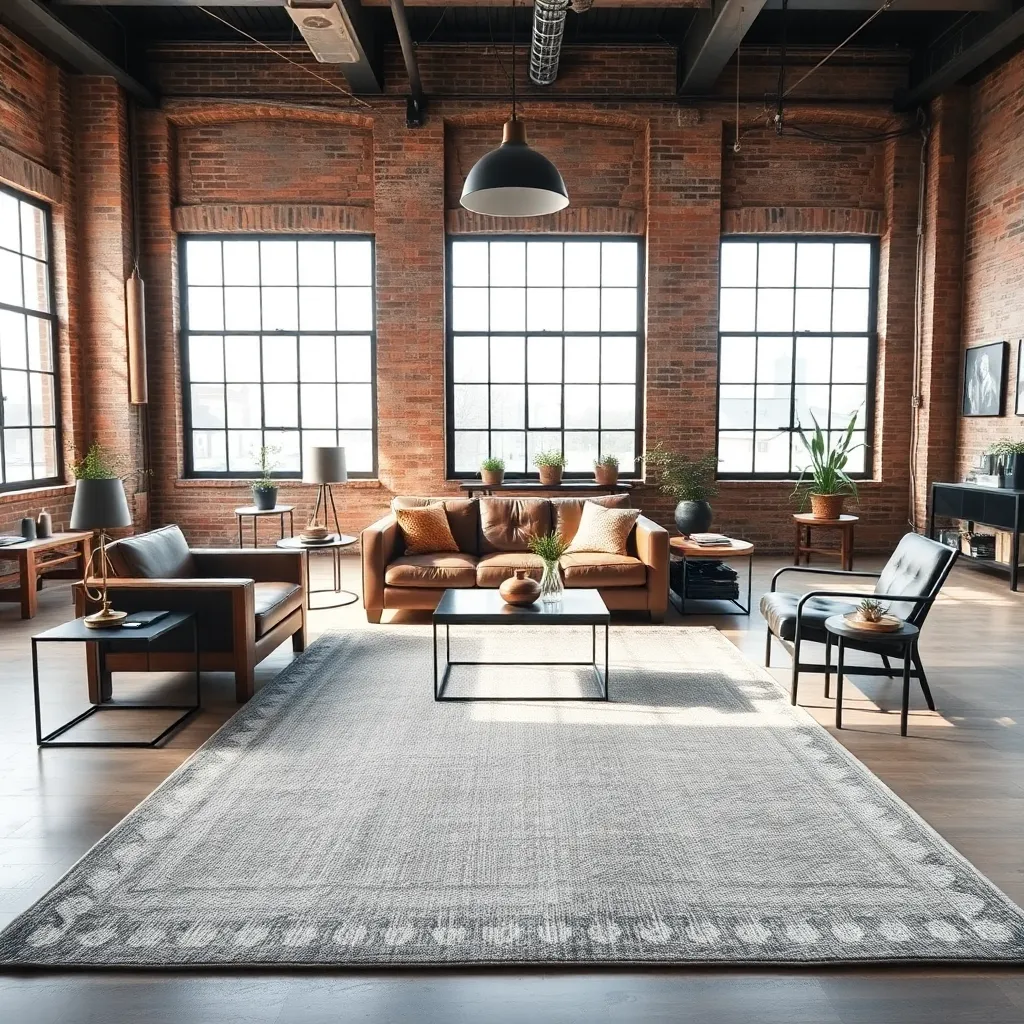
Industrial-style rugs are a perfect way to anchor a room while adding a layer of texture and warmth to the stark elements of industrial design. Opt for rugs made from natural materials like wool or jute, which can enhance the earthy tones typical in industrial spaces.
Consider choosing rugs in muted colors such as grays, browns, and blacks, which complement the raw materials like exposed brick and metal. For a more dynamic look, select rugs with subtle patterns that mimic the geometric lines often found in industrial furniture and architecture.
Incorporating an industrial rug into your space involves strategic placement to create balance. Place a large rug under a seating area or dining table to define the space, ensuring all furniture legs rest on the rug for cohesion.
For smaller spaces or to create a focal point, layer a smaller rug over a larger neutral one to provide contrast and depth. This technique works especially well with rugs that have a distressed or vintage look, enhancing the industrial vibe.
Advanced decorators might explore mixing textures by pairing a coarse, woven rug with sleek leather furniture for an intriguing juxtaposition. This not only adds visual interest but also plays into the industrial style’s love for contrasting elements.
Choosing Materials for Durability
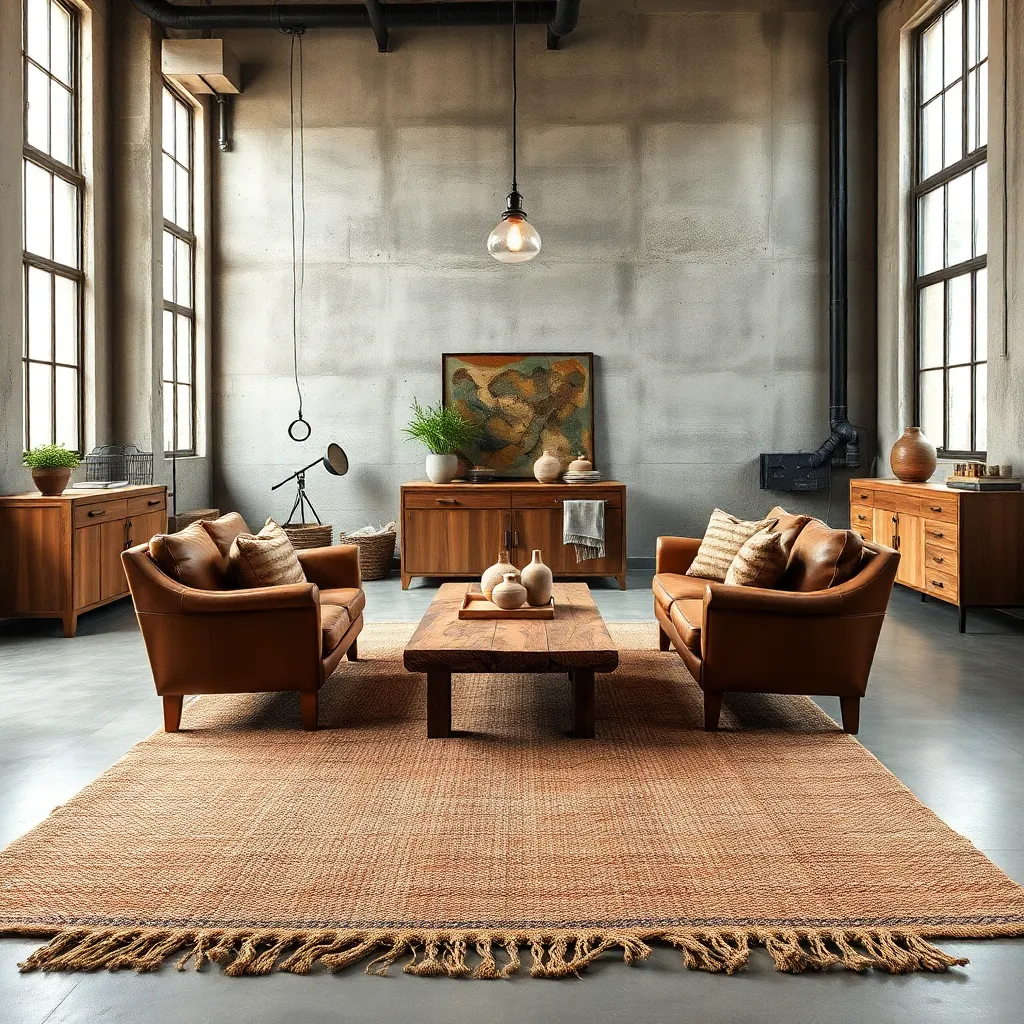
When selecting materials for industrial-style rugs, prioritize durability to ensure the rug withstands high-traffic areas. Opt for materials like wool, jute, or synthetic fibers that are known for their resilience and ease of maintenance.
Wool is a popular choice for its natural stain resistance and ability to maintain its appearance over time. For those seeking a more affordable option, consider rugs made from polypropylene, which is both durable and easy to clean.
Incorporating jute or sisal rugs can add an earthy texture that complements the rugged charm of industrial spaces. These materials not only offer a hardy surface but also introduce a subtle, natural element to the room.
To maintain the rug’s longevity, consider the placement of your industrial-style rug carefully. Positioning it under heavy furniture can minimize wear and tear, while also anchoring the room’s design elements.
Choose colors that pair well with the industrial palette, such as neutral tones or muted hues, to create a cohesive look. For an advanced design touch, consider layering rugs with complementary textures and patterns to add depth and interest.
Integrating Rugs in Open Spaces
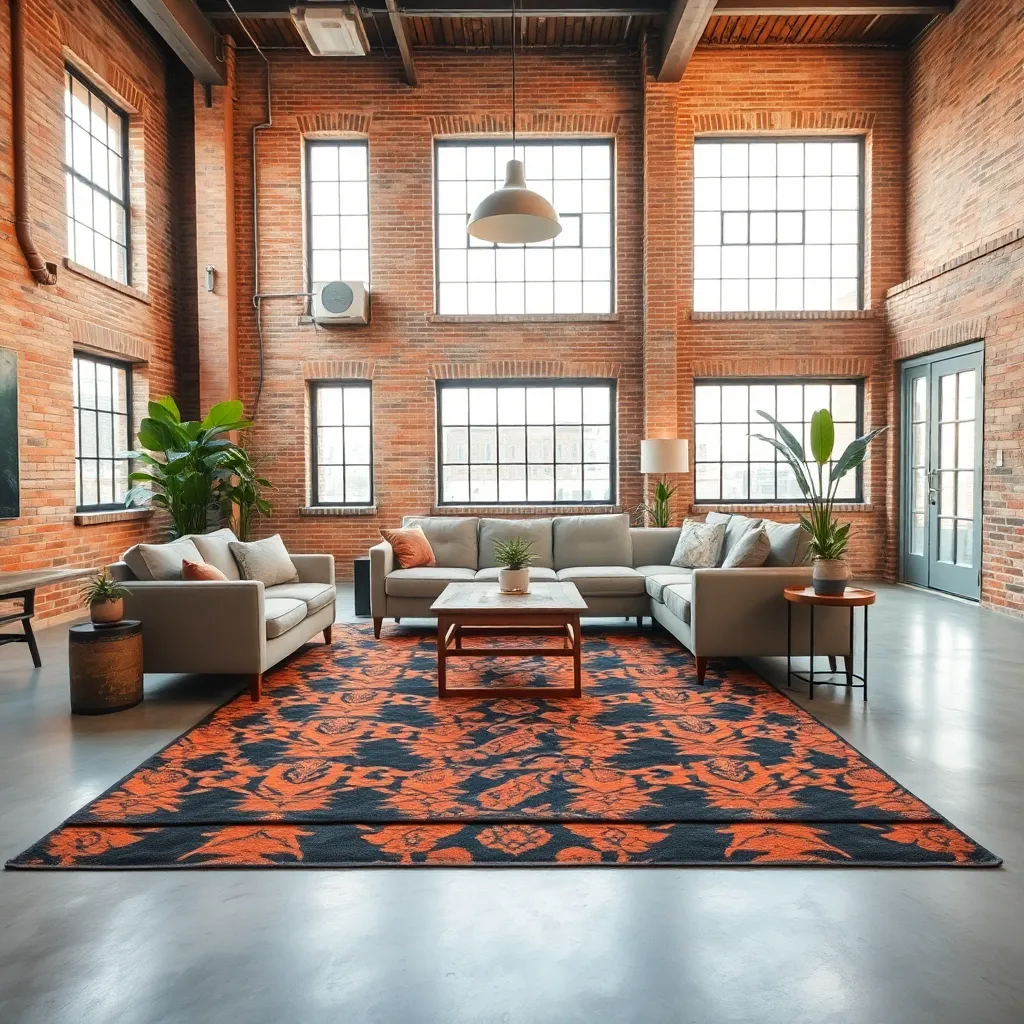
Integrating rugs in open spaces is a strategic way to define areas and enhance the industrial aesthetic. Start by choosing rugs that complement the raw materials typical of industrial design, such as concrete or exposed brick.
Opt for rugs with neutral tones like greys or earthy shades to maintain a cohesive look. Layering rugs of varying textures can add depth and warmth to expansive areas.
In a large open space, use rugs to delineate functional zones, such as dining, living, and working areas. Place a large rug under the dining table, ensuring it extends beyond the chairs to anchor the space visually.
For advanced styling, experiment with juxtaposing industrial-style rugs with sleek, modern furniture. A rich, textured rug under a minimalist sofa can create a striking contrast that draws attention to both elements.
Balancing Rug Colors and Patterns
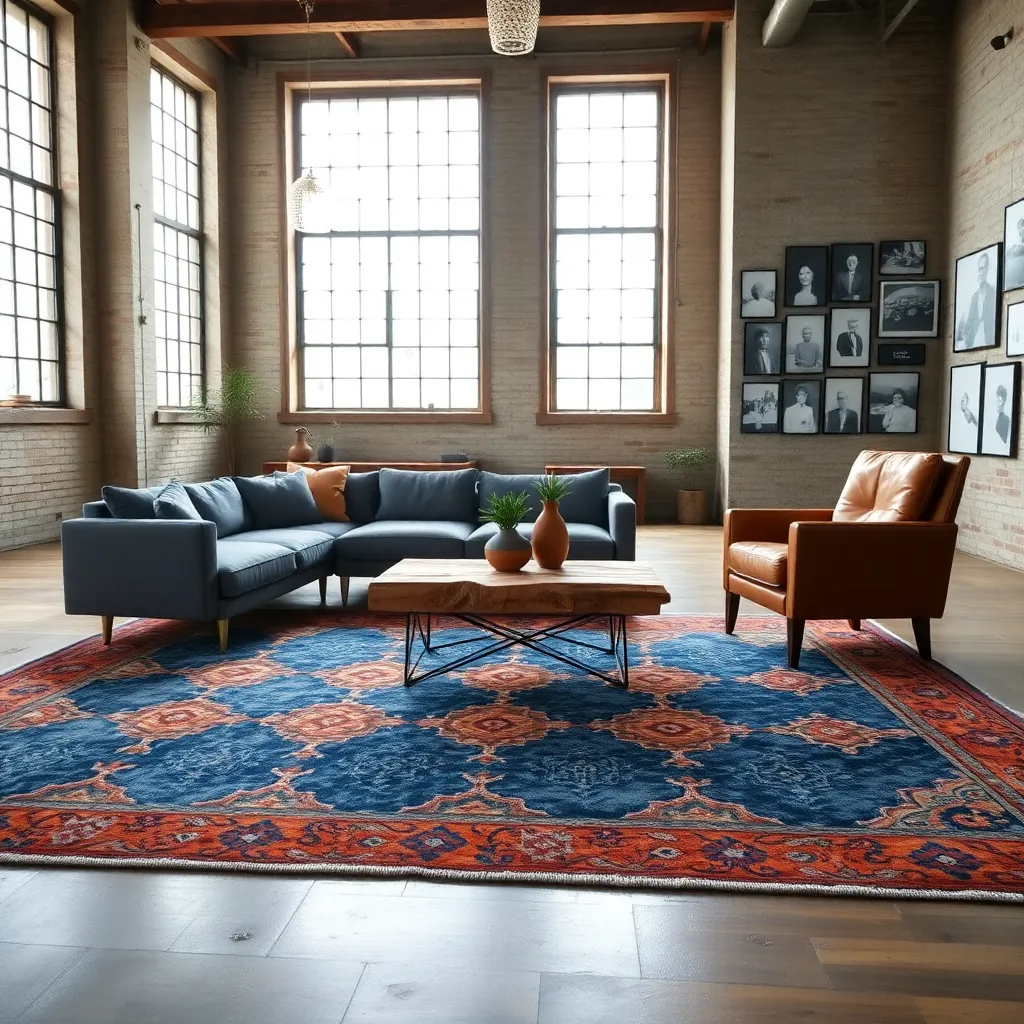
When selecting rugs for an industrial-style space, it’s crucial to balance colors and patterns to maintain the room’s cohesive look. Opt for rugs that feature a mix of neutral tones like grays and browns, which complement the raw materials typical of industrial design, such as exposed brick and metal surfaces.
Consider incorporating rugs with subtle geometric patterns to add visual interest without overwhelming the space. These patterns can echo the architectural lines of industrial furniture, creating a harmonious aesthetic that ties the room together.
For those looking to experiment, layer rugs to introduce texture and depth into the room. Start with a larger, solid-colored rug in a muted tone, and place a smaller, patterned rug on top to create a dynamic and inviting focal point.
Mixing different textures such as jute or wool can add warmth to the often stark industrial environment. Ensure that the textures of the rugs complement the existing materials in the room, like leather sofas or wooden tables, to maintain a balanced and inviting atmosphere.
Maintaining Industrial Rug Appeal
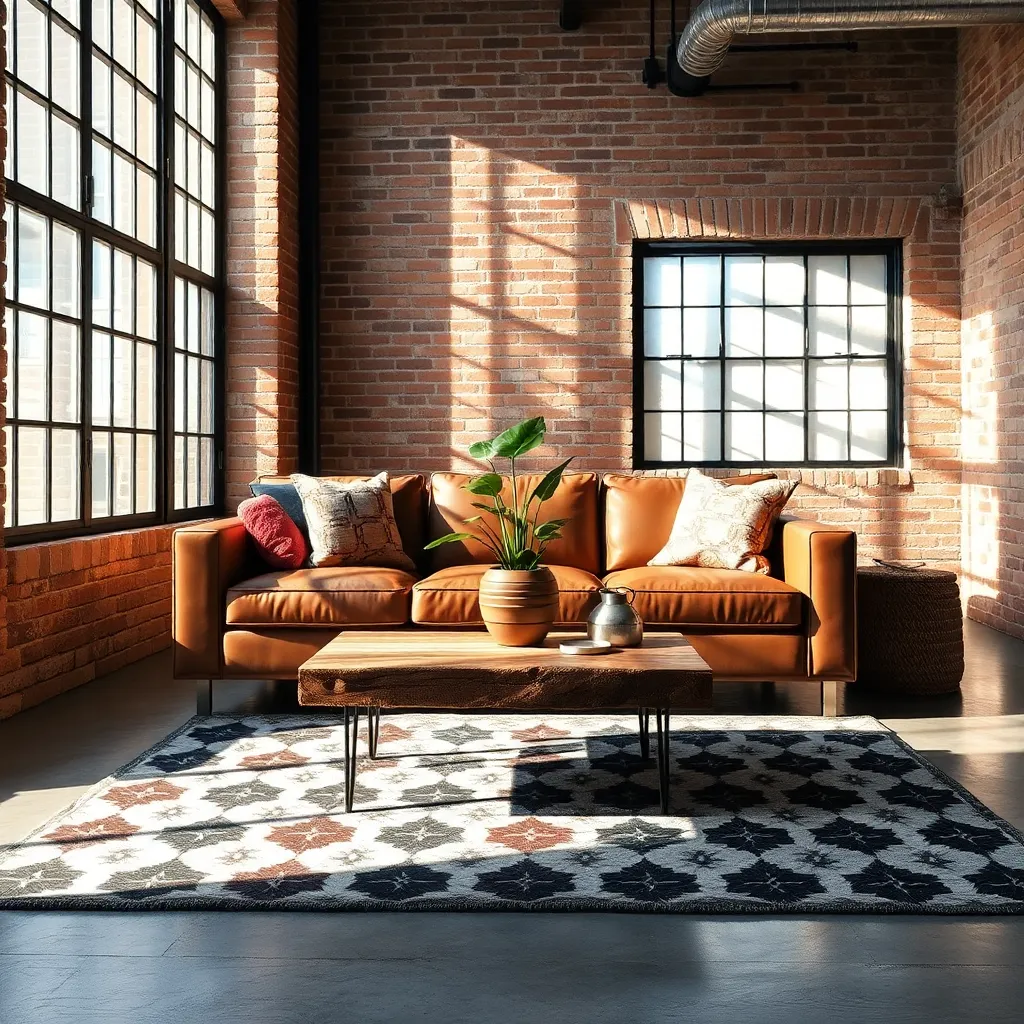
Maintaining the appeal of your industrial-style rug involves regular cleaning practices that are both effective and gentle. Use a vacuum cleaner with a brushless suction attachment to prevent damage to the rug’s fibers, ensuring that dirt and debris are removed without causing wear.
Consider the placement of your rug to enhance its longevity and visual impact within your space. Avoid areas with heavy direct sunlight to prevent fading, and use rug pads to minimize friction with the floor, prolonging the life of your rug.
To retain the industrial charm, pair your rug with furniture that complements its rugged texture. Metal or reclaimed wood furniture pieces harmonize well with the industrial aesthetic, adding a cohesive yet dynamic look to your room.
Color coordination is essential in maintaining your rug’s industrial appeal. Stick to a palette of muted tones such as grays, browns, and blacks, which not only reflect the industrial style but also provide a neutral backdrop for bolder accent pieces.
Conclusion: Growing Success with These Plants
In exploring the world of industrial-style rugs, we’ve uncovered five key relationship concepts that mirror the resilience and beauty of these unique decor pieces. First, we emphasized the importance of building a strong foundation, just as a quality rug underpins a room. Next, we highlighted communication, akin to the intricate patterns that weave a story in our lives. We also touched on adaptability, much like how rugs can transform a space with ease. Additionally, we stressed the significance of nurturing connections, paralleling the comfort a rug brings to a home. Finally, we discussed the value of sustainability, reflecting the enduring nature of lasting relationships.
Now, take a moment to reflect on these elements and choose one area to focus on improving in your relationship. Perhaps it’s initiating a meaningful conversation or finding new ways to adapt together. As a call to action, save or bookmark this article—your personal guide to nurturing a more fulfilling relationship.
Remember, just like a well-placed rug can redefine a space, thoughtful actions can transform your relationship journey. With dedication and love, relationship success is not just a dream but a foreseeable reality. Let’s take that step forward together.
